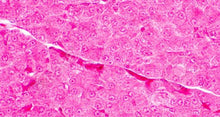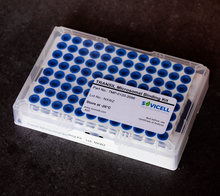When estimating intrinsic clearance in metabolic stability incubations with microsomes or hepatocytes, the disappearance of the parent compound is measured over a time course. The measured clearance rate is only reflecting the intrinsic clearance rate, when the test compound is available to interact freely with the CYP enzymes at the assumed target concentration.
However, this is frequently not the case, because compounds tend to bind quantitatively to microsomal or hepatocyte membranes. This can significantly reduce the available concentration – even to 1/100 or less of the total concentration in the incubation (Obach, 1999; McLure et al., 2000; Austin et al., 2002; Hallifax and Houston, 2006). Consequently, it is important to estimate microsomal binding in these in vitro incubations.
The TRANSIL Microsomal Binding kit measures the affinity of drugs to human microsomal membranes and determines microsomal binding in stability incubation experiments. This allows the accurate estimation of intrinsic clearance from stability incubations by correcting the experimental clearance with the fraction of drug unbound in the incubation. Internal quality controls provide easy assessment of recovery, experiment and data quality.
The kit consists of ready-to-use 96 well microtiter plates. One plate can be used for measuring HSA binding of up to 12 compounds. The assay requires only 5 steps: (i) addition of drug candidate, (ii) mixing and incubation for 12 minutes, (iii) removal of beads by centrifugation, (iv) sampling of supernatant, and (v) quantification of drug candidate.









